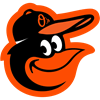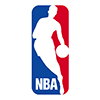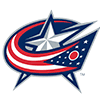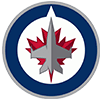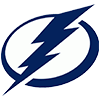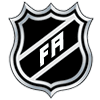This article appears in the 2021 RotoWire Fantasy Baseball Guide. You can order a copy here.
I've been doing this feature for the RotoWire Fantasy Baseball Magazine for a decade, and this is the hardest one ever. We had the short, and awkward, 2020 season, one in which teams faced a limited subset of opponents and played in a limited subset of parks. The lack of a real exhibition season was reflected in lower offensive levels, including the lowest batting average, .245, since 1972, and once again, the highest strikeout rate ever -- even though pitchers didn't bat for the first time ever.
There's no historical comp here. The shortest seasons in modern baseball, the strike-shortened 1981 and 1994 campaigns, saw teams average 107 and 114 games, respectively. Both were also accompanied by full minor-league seasons; last year, there was no affiliated minor-league baseball. It's hard to pick Wander Franco or pan Mackenzie Gore when they played nothing more than intrasquad games at the alternate sites.
The pandemic has exacerbated modern offseason trends as well. As I write this, the NFL playoffs are underway, and still more than half the teams in MLB have done nothing to improve themselves for 2021. The only top 10 free agents to sign were two pitchers who took the qualifying offer. Just one deal of more than two years has been signed. With so many free agents available, and so many teams agnostic as to their short-term fortunes, projecting playing time is a
This article appears in the 2021 RotoWire Fantasy Baseball Guide. You can order a copy here.
I've been doing this feature for the RotoWire Fantasy Baseball Magazine for a decade, and this is the hardest one ever. We had the short, and awkward, 2020 season, one in which teams faced a limited subset of opponents and played in a limited subset of parks. The lack of a real exhibition season was reflected in lower offensive levels, including the lowest batting average, .245, since 1972, and once again, the highest strikeout rate ever -- even though pitchers didn't bat for the first time ever.
There's no historical comp here. The shortest seasons in modern baseball, the strike-shortened 1981 and 1994 campaigns, saw teams average 107 and 114 games, respectively. Both were also accompanied by full minor-league seasons; last year, there was no affiliated minor-league baseball. It's hard to pick Wander Franco or pan Mackenzie Gore when they played nothing more than intrasquad games at the alternate sites.
The pandemic has exacerbated modern offseason trends as well. As I write this, the NFL playoffs are underway, and still more than half the teams in MLB have done nothing to improve themselves for 2021. The only top 10 free agents to sign were two pitchers who took the qualifying offer. Just one deal of more than two years has been signed. With so many free agents available, and so many teams agnostic as to their short-term fortunes, projecting playing time is a crapshoot. In an effort to make this the best preseason baseball magazine, RotoWire provides the latest deadlines of any mag out there, and even still, I'm feeling my way through the fog.
So as you read these picks and pans, keep in mind that they're like none other I've written, as we head into a draft season like no other we've seen.
Yordan Alvarez DH • HOUSTON Alvarez fought knee soreness all spring before the pandemic shut down the game, caught COVID-19 just before the camps re-opened in July, then played in two games before a right patella tear shut him down for good. His outfield days are over, but Alvarez is such a monster at the plate he's worth a roster spot as a DH-only. His two-game season may keep him buried on many of your rivals' lists, but he's a top-75 fantasy player.
Dylan Carlson OF • ST. LOUIS At 20 years old in 2019, Carlson slugged .518 at Double-A and .681 in three weeks at Triple-A. Despite the big numbers and a team that had finished 12th in the NL in slugging in 2019, the Cardinals held back Carlson, calling him up Aug. 15 after their early-season coronavirus shutdown. Carlson started both ends of three doubleheaders in his first five days in the majors, wore down quickly and was sent to the alternate site in early September. After his return Sept. 18, though, he hit .278/.325/.611. The Cardinals, who dropped to 14th in the league in slugging, have to plug Carlson's bat in every day. He'll hit 30 homers this year.
Vladimir Guerrero 1B/3B • TORONTO We're so spoiled with rookies who show up fully formed and ready to contend for MVP awards that we become jaded when a young player doesn't take over the league. The most heralded prospect since the Mike Trout/Bryce Harper duo in 2012, Vladito has "only" hit .269/.336/.442 in a bit more than a year's worth of playing time, with 24 homers and 102 RBI in 183 games. Last year Guerrero improved his contact rate and when he hit the ball, hit it hard -- top 15 in MLB in exit velocity and hard-hit percentage. The last thing left to unlock is elevating the ball -- he had an unacceptable 54.6% groundball rate last year. Look for him to take care of that this year, and make sure he's on your roster when it happens.
Gavin Lux 2B • L.A. DODGERS One problem with playing for a strong organization is that it sometimes has too many good players. Lux, an offseason favorite for NL Rookie of the Year, didn't even make the Dodgers out of camp and after a month playing intrasquad games, hitjust .175 down the stretch once called up. Throw it away. With Enrique Hernandez and Joc Pederson free agents, playing time won't be as tough a challenge this year. Look for Lux to hit well and, in that lineup, be a threat for 100 runs scored.
Oscar Mercado CF • CLEVELAND In his second at-bat of the 2020 season, Mercado grounded a single up the middle, driving home Jordan Luplow for the first run of the Indians' campaign. He had a 1.000 OPS, and he absolutely should have stopped there. Mercado had just 10 more hits the rest of the season, lost his starting job in early August and finished the year with a .348 OPS. Not a typo. Mercado, though, is one of Cleveland's few viable options in center, and he's a far better hitter than he showed last year, with 15-15 and even 20-20 potential. He has an ADP in the 300s as I write this, but he'll return top 150 value in 2021.
Luis Patino SP • TAMPA BAY The Rays have taken all manner of anonymous pitchers and turned them into weapons, so what will happen when they get hold of one of the best pitching prospects in baseball? Patiño, part of the haul for Blake Snell, had to pitch out of the bullpen for the Padres last year and didn't cotton to the usage. He moves east with a fastball that sits 96 and a very good slider, with a changeup that could become a weapon. Left alone to be a starter for a team down Snell and Charlie Morton, he'll be an early favorite for AL Rookie of the Year.
Michael Pineda SP • MINNESOTA Pineda spent the first half of the truncated season serving the remainder of a 60-game suspension under the Joint Drug Agreement. He made five starts and ran a 3.38 ERA (and a 2.22 FIP) by leaning on his slider. He threw the pitch nearly 40% of the time, got 17 of his strikeouts on it and allowed just five hits with it. In two years with the Twins, totaling one full season of pitching, Pineda is 13-5 with a 3.74 FIP and 165 strikeouts. He's positioned to have the best year of his career in 2021.
Cal Quantrill SP • CLEVELAND The Indians took back quantity in the trade of Mike Clevinger, foregoing a highly-rated prospect in the deal. Quantrill, the eighth pick in the 2016 draft, had the best pedigree of the group. Across two teams last year, Quantrill had a 2.25 ERA, leaning in hard to his two-seam fastball in the process. With Clevinger and Carlos Carrasco gone, Quantrill has a good chance to fill a rotation spot and become the latest random Indians breakout.
Leody Taveras CF • TEXAS Like Oscar Mercado, Taveras will earn his playing time by being a plus center fielder on a team that needs defensive help. Pushed to the majors last year with just half a season of Double-A under his belt, Taveras squeaked out a .227/.308/.395 line and was a bit overmatched, with 43 strikeouts against just 27 hits. When he was on, though, he ran: eight-for-eight stealing bases. Tav- eras' speed has never been questioned, but in the majors he found an efficiency that he hadn't before. In an environment where steals are precious, Taveras could swipe 25-to-30 bags for a manager in Chris Woodward whose teams lead MLB in steals and attempts since he took over in 2019.
Christian Yelich OF • MILWAUKEE Two years ago, I faded Yelich in this space after his massive second-half break- out. The lanky lefty proved me right by dropping all the way to, uh, second in the NL MVP race in 2019. In the shortened 2020 season, though, he hit just .205/.356/.430. Belated victory lap? Hardly. Yelich struck out a bit more, but the batted-ball quality, the plate discipline, were still in place. He just had one of those years: a .259 batting average on balls in play, down almost 100 points from 2019 with an uptick in his groundball rate. Given 162 games, it is likely that Yelich's BABIP, and the rest of his line, would have looked much like it did in 2018 and 2019. He'll be back in 2021.
There's a whole class of these players, by the way, whose skill sets are un- changed and whose 2020 season stats look poor because of unusually poor outcomes on contact in a small sample. Cody Bellinger, Joc Pederson, Nick Castellanos, Anthony Rizzo and Eugenio Suarez are all strong bounce-back candidates who fit Yelich's mold.
As we switch to pans, let's reiterate the point I made a year ago: I pan every established closer. Half the top 10 pitchers in saves in 2019 gave up the job -- in a nine-week season! -- in 2020. Two others were too injured to matter to your team. With more teams opting for fluid bullpen roles, chasing saves in the draft is a waste of time. Draft good relievers in double-digit rounds and you'll fall into enough saves to compete.
As for the rest...
Randy Arozarena OF • TAMPA BAY 46.7%. Arozarena hit 15 flyballs after being called up to the Rays in September, and 46.7% of them, seven all told, went for homers. Think that was impressive? The number jumped to 55.6% in the playoffs, when Arozarena tacked on 10 more. That would be a good two months for Babe Ruth. These rates aren't remotely sustainable for even the best power hitters in the game, and at his best, Arozarena isn't in that group. There's 15-15 potential here, but also enough swing-and-miss that the floor is "loses his job."
Trevor Bauer SP Because panning the reigning MVP two years ago worked out so well, let's now dunk on the new Cy Young Award winner. Look, Bauer was fantastic last season, but it was just the second time in nine years he'd performed at anything like that level, and remember, he did it for just 11 starts, pitching in a Central "conference" with some wretched offensive teams. He's a durable No. 3 starter who had a two-month heater, not an ace.
Whit Merrifield 2B • KANSAS CITY The Royals' Swiss Army knife, Merrifield made at least 10 starts at three positions last year and played a few others for good measure. He's 32 now, though, and last year he was one of the weakest hitters in the game; 11th-worst in exit velocity, seventh-worst in hard-hit rate. Pitchers may be noticing: Merrifield's walk rate of 4.5% was also among the worst in baseball. The cliff is approaching, and as much as you want the steals, they may not be worth the rest of the package.
Kyle Lewis CF • SEATTLE One of the best stories of 2020, the oft-injured prospect roped 11 homers in the shortened season. Look more closely, and you'll see it was one incredible run at the start of the season -- .455/.500/.636 in July -- and a long slide down from there. Lewis hit .225/.340/.399 over the final two months. Julio Rodriguez and Jarred Kelenic could push Lewis to the bench by summer.












